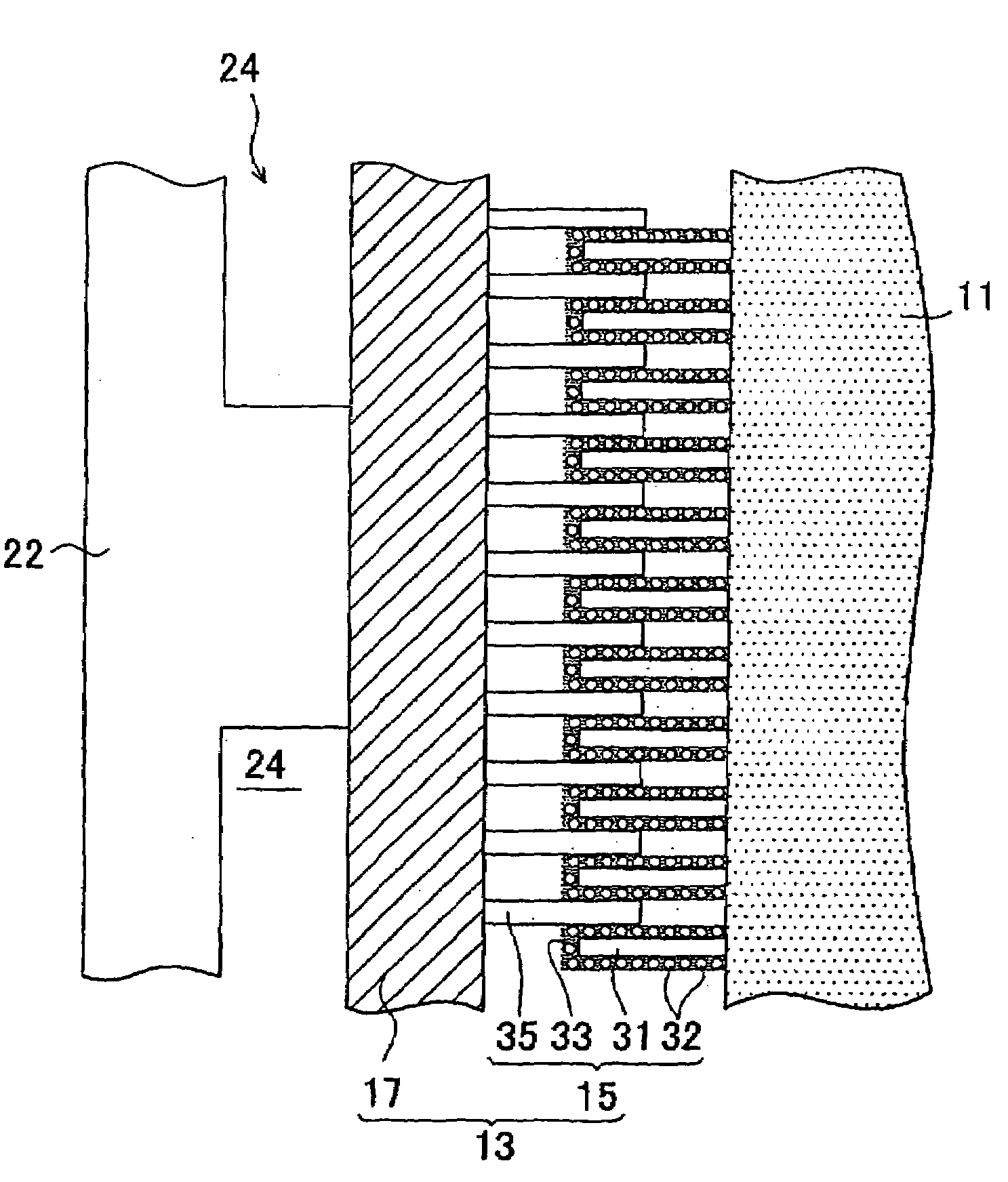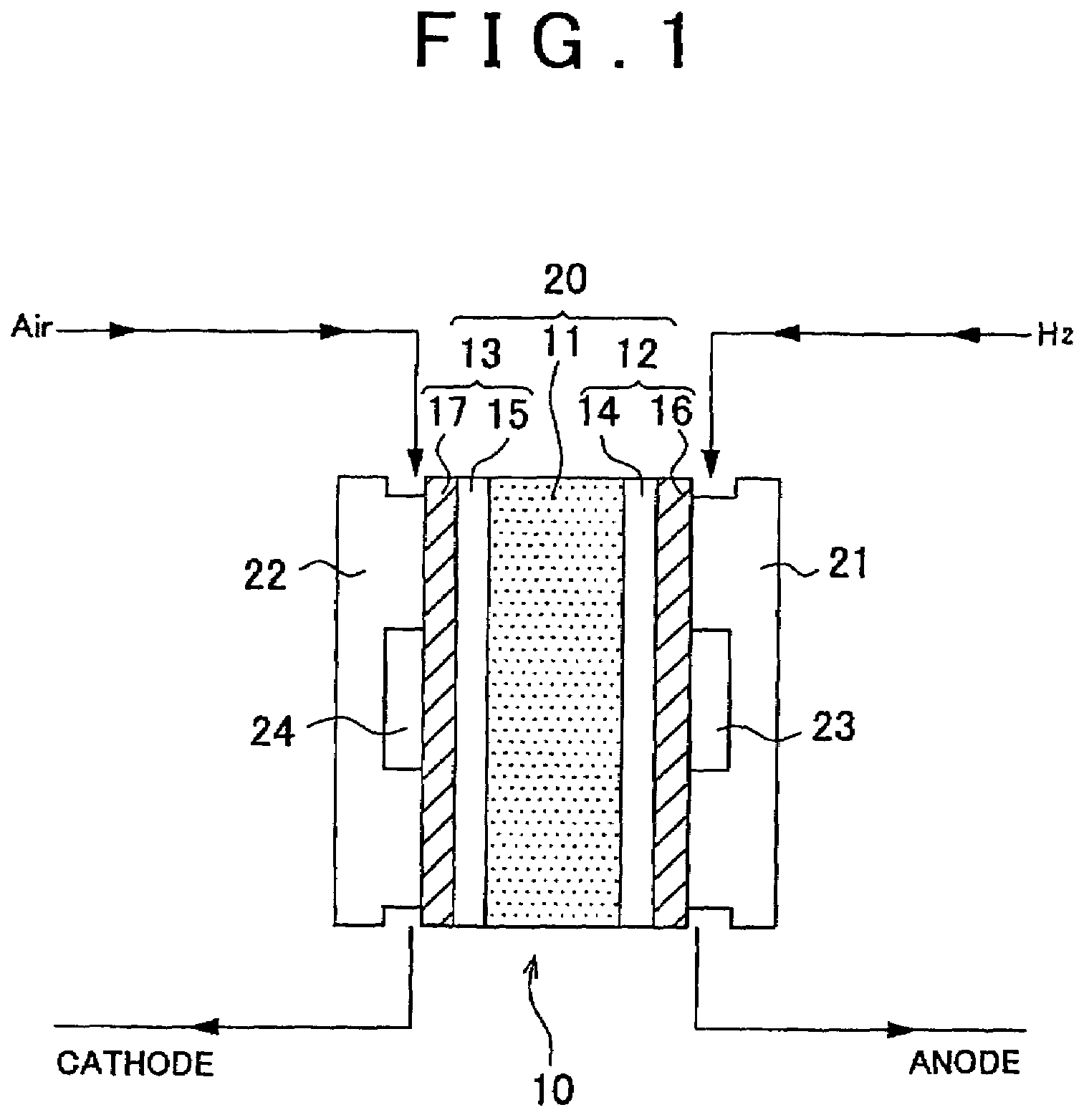Membrane electrode assembly and fuel cell
a fuel cell and membrane electrode technology, applied in cell components, active material electrodes, electrochemical generators, etc., can solve the problems of low efficiency, low efficiency, and inability to effectively utilize the costly noble metal catalyst, so as to achieve high surface pressure, high electrical current density, and high durability
- Summary
- Abstract
- Description
- Claims
- Application Information
AI Technical Summary
Benefits of technology
Problems solved by technology
Method used
Image
Examples
Embodiment Construction
[0023]An embodiment of a fuel cell according to the present invention is described in detail below, with references made to the accompanying drawings, and the embodiment of a membrane electrode assembly according to the present invention will also be described in detail as part of that description. In the embodiment described below, the description is mainly with respect to a solid polymer fuel cell (PEFC) using hydrogen gas and air (oxygen) as fuel for electrical generation operation. It will be understood, however, that the present invention is not restricted to the embodiments described below.
[0024]An embodiment of a membrane electrode assembly and a fuel cell according to the present invention is described below with references made to FIG. 1 to FIG. 3. This embodiment uses single-layer carbon nanotubes 31, 35 (hereinafter single-layer carbon nanotube are sometimes abbreviated as CNT) as the electrically conductive fibers. The linear Pt-carrying CNT 31 that carries platinum (Pt;...
PUM
 Login to View More
Login to View More Abstract
Description
Claims
Application Information
 Login to View More
Login to View More - R&D
- Intellectual Property
- Life Sciences
- Materials
- Tech Scout
- Unparalleled Data Quality
- Higher Quality Content
- 60% Fewer Hallucinations
Browse by: Latest US Patents, China's latest patents, Technical Efficacy Thesaurus, Application Domain, Technology Topic, Popular Technical Reports.
© 2025 PatSnap. All rights reserved.Legal|Privacy policy|Modern Slavery Act Transparency Statement|Sitemap|About US| Contact US: help@patsnap.com



